Chichen Itza is a world-renowned archaeological site located in the Yucatán Peninsula of Mexico. It is one of the most important and well-preserved ancient Mayan cities.
A Chichen Itza day trip from Tulum is a fantastic way to explore one of Mexico’s most iconic archaeological sites. We did this tour and here’s everything you need to know!
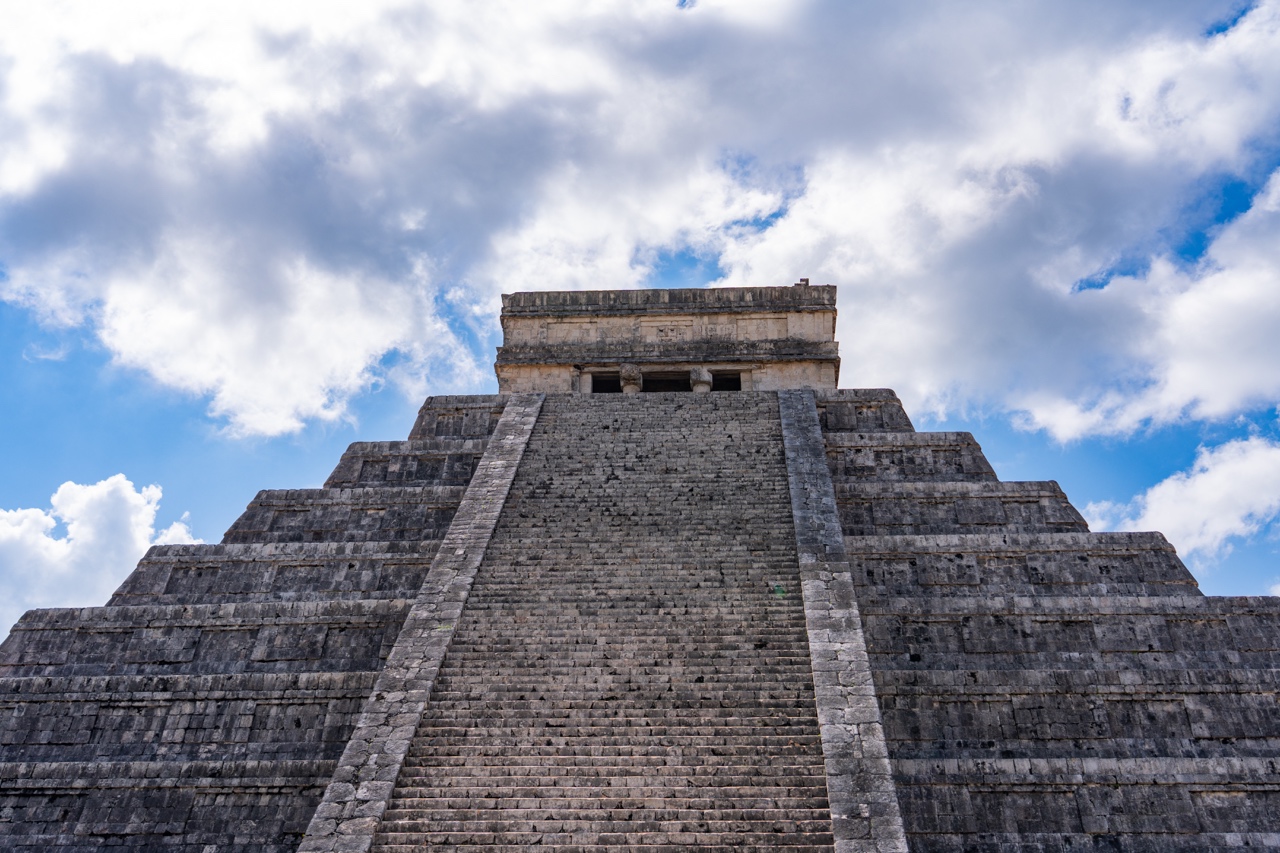
HOW MUCH DOES A CHICHEN ITZA DAY TRIP COST?
We booked our tour on GetYourGuide with SAT Mexican tours. It cost $48 USD per person and included air-conditioned transportation to and from Chichen Itza from Tulum, a bilingual tour guide, entrance into Chichikan Cenote, and a buffet lunch.
It’s important to note that entrance to Chichen Itza is NOT included in this tour, and you’ll need to pay an additional 614 MXN ($35 USD) per person for entrance into the site.
If you want to swim/go down into the cenote, you will also be required to rent a lifejacket for 50 MXN ($3 USD), and a locker for 50 MXN ($3 USD).
In total, we paid $178 USD total or $89 USD per person for this excursion (plus a tip of course).
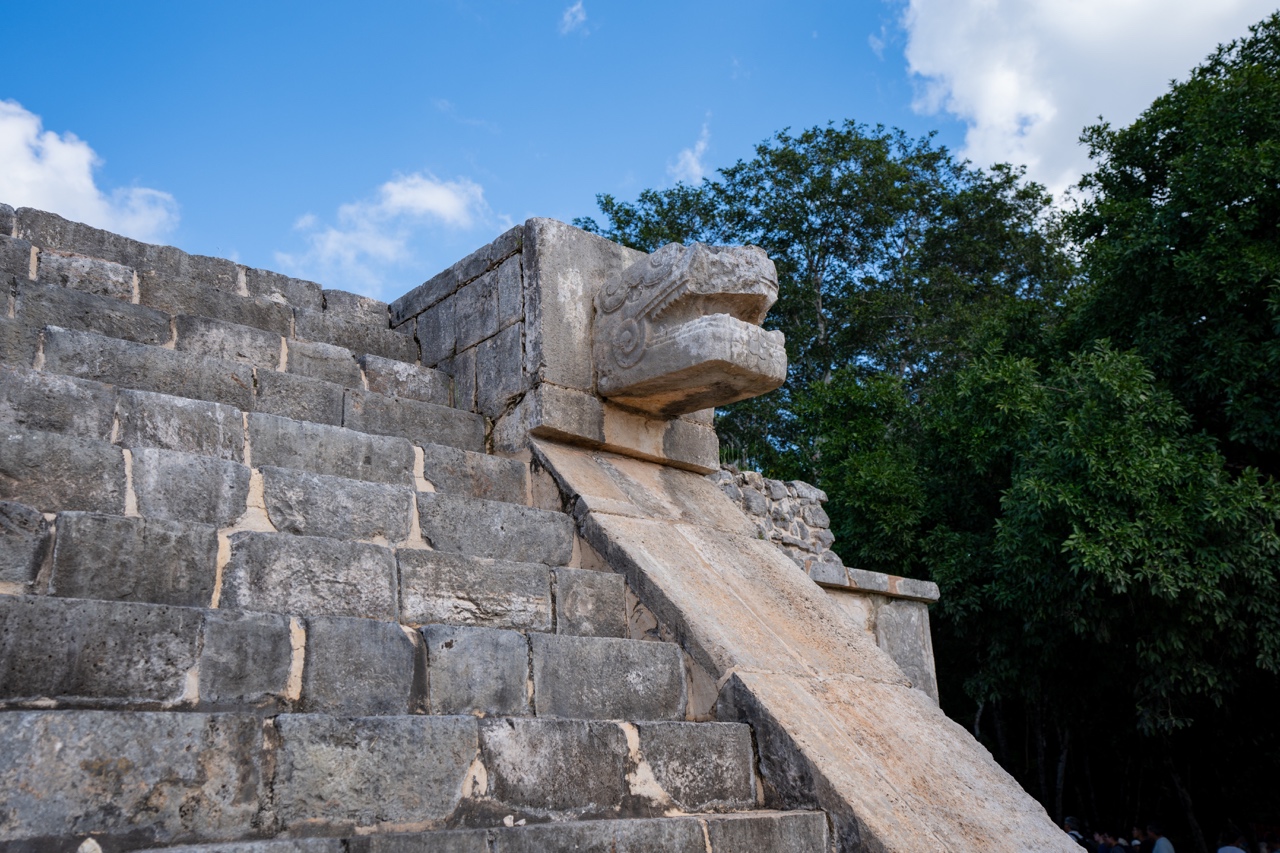
HISTORY OF CHICHEN ITZA
Chichen Itza was built over several centuries, with construction beginning in the early part of the 7th century CE. The city reached its peak between the 7th and 10th centuries. The construction and expansion of Chichen Itza continued over this period, and many of its most iconic structures, including the Pyramid of Kukulcan (or El Castillo), were believed to have been built during the 9th and 10th centuries. During the 1400s, the Mayans mysteriously abandoned Chichén Itzá, and scientists and historians don’t have any concrete proof or records as to why. Scientists speculate that droughts, exhausted soils, and royal quests for conquest and treasure may have contributed to Chichén Itzá’s downfall.
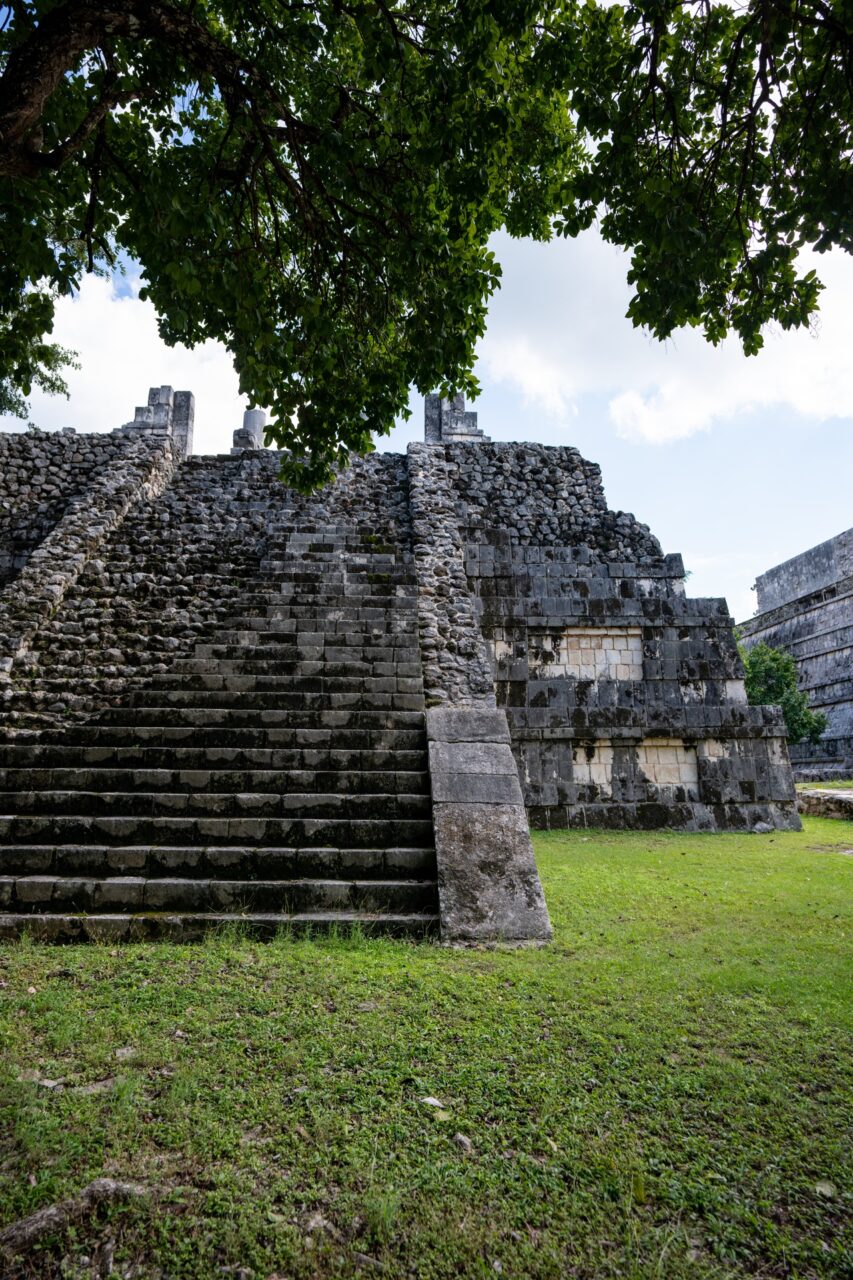
WHAT TO EXPECT
Our tour started bright and early with a 7 am pickup at the Super Aki in Tulum.
The company does offer hotel pickup, for an additional fee, but we opted for the cheaper option.
Our bus pulled into the parking lot and we met our guide, Miriam. The bus was comfortable and air-conditioned, had wifi, and also had a bathroom onboard.
It was about a 2-hour drive to Chichen Itza.
About 30 minutes before we arrived, our tour guide Miriam gave us some fun facts about Mayan history & culture, as well as explained the significance of Chichen Itza and the surrounding cenotes.
We were also expected to pay the Chichen Itza entrance fee directly to our tour guide on the bus, either by MXN, USD, or online with a credit card.

ARRIVAL AT CHICHEN ITZA
After arriving, we were given a cold bottle of water and followed our tour guide to the entrance of Chichen Itza. She took care of getting our tickets, and we were given about 10 minutes to use the bathroom and buy a snack.
We were given our tickets and waited in the long queue to pass through security (it went fairly quickly though).
Note: Although some reports have said that you need to pay an extra fee to bring in “professional” camera equipment, we were able to enter with our Sony A7IV with no issues. Drones are not permitted though.
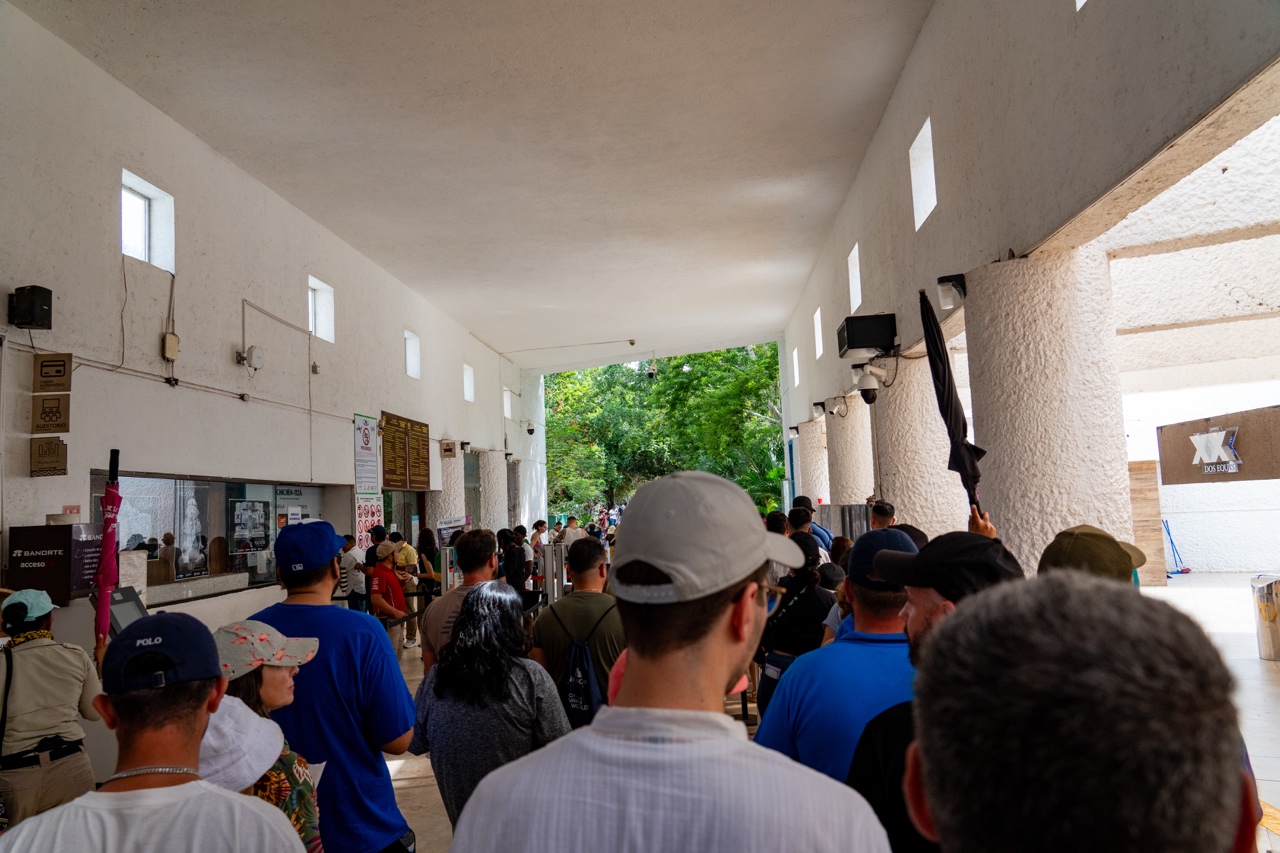
EL CASTILLO (THE PYRAMID OF KUKULCAN)
The first hour of our time at Chichen Itza was a guided tour. We walked in and immediately were wowed by the iconic El Castillo, aka the Pyramid of Kukulcan, the centerpiece of Chichen Itza.
Miriam explained that the temple was dedicated to the feathered serpent god Kukulcan, and it was built with extreme architectural precision. The pyramid features four sides with 91 steps each, culminating in a total of 365 steps when considering the top platform as the final one, symbolizing the solar year. The Mayans were also astrology experts and built El Castillo so that during the solar equinoxes, the sun’s position in the sky casts a distinctive shadow of a serpent on the northern staircase.
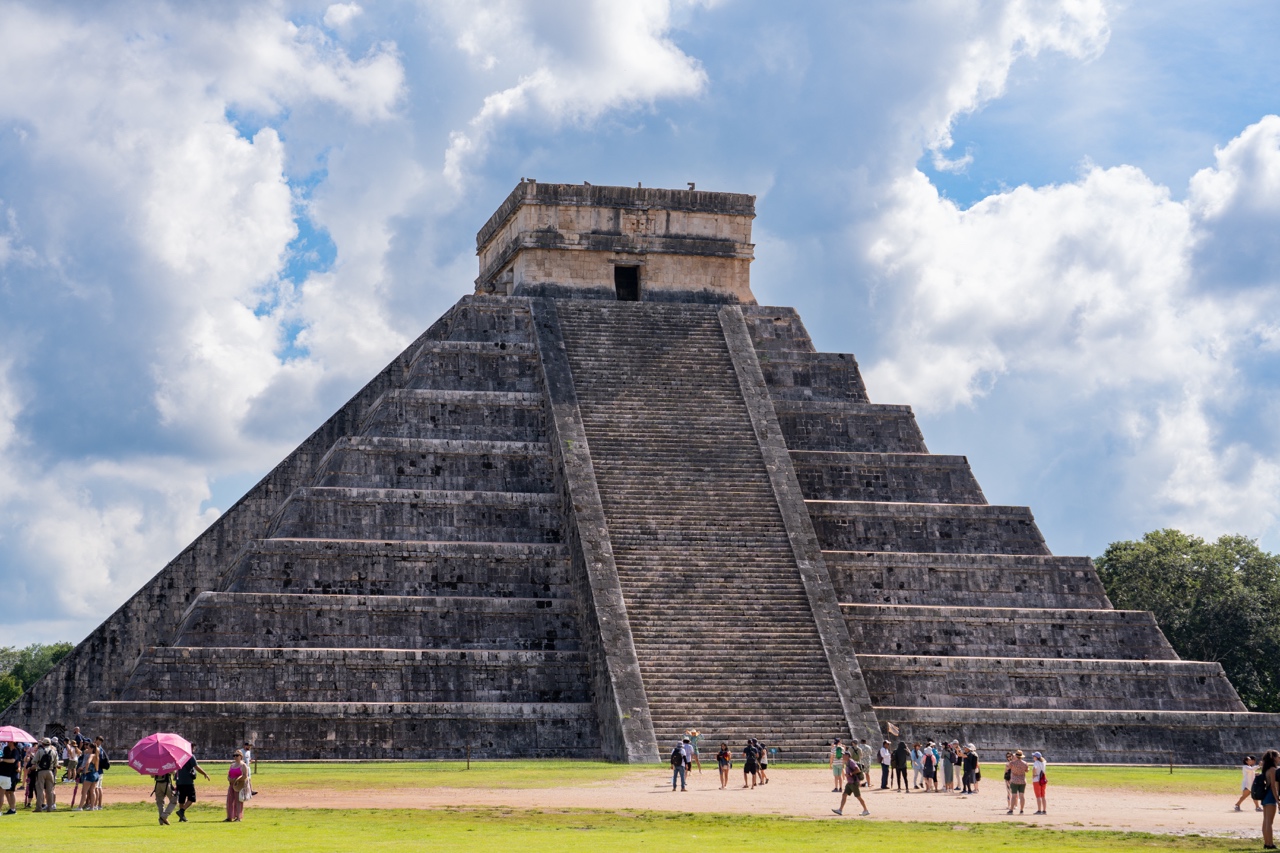
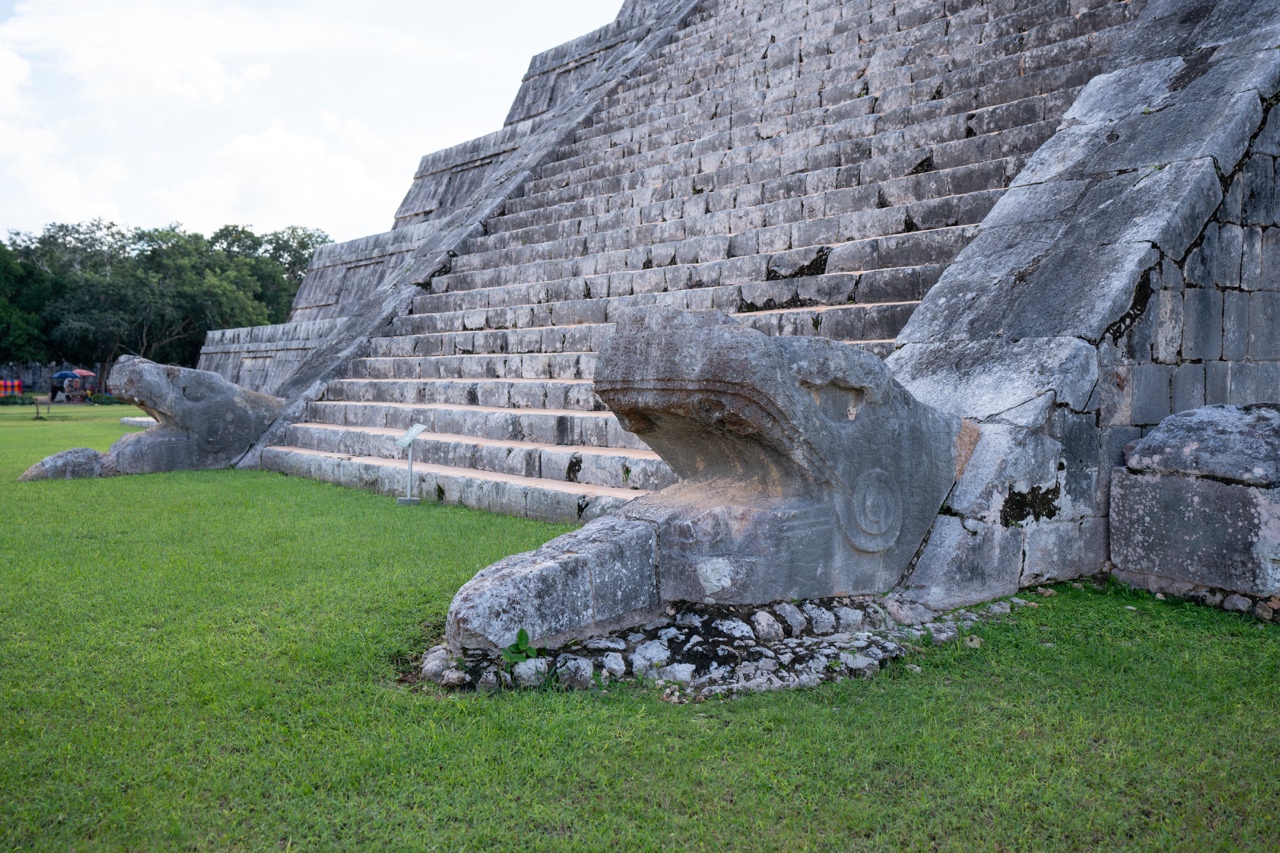
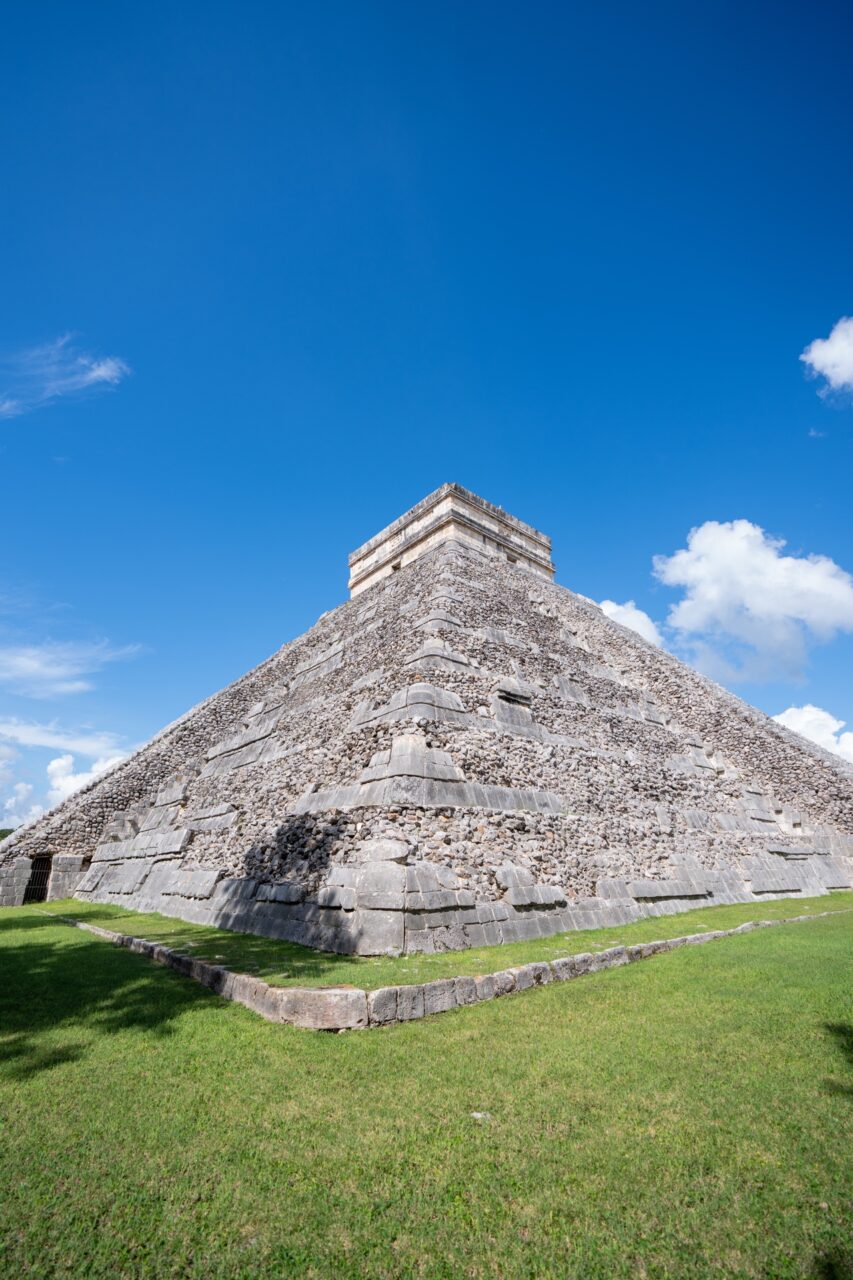
GREAT BALL COURT
Next, our tour guide led us to the Great Ball Court. One of the most intriguing things we learned on our tour was regarding this Great Ball Game they used to play. This ball game held deep religious and spiritual meaning to the Mayans, and The Great Ball Court is one of the most well-preserved and largest courts of its kind and is surrounded by ornate carvings depicting the games. Historians believe that the Great Ball Game held deep religious and symbolic importance for the Mayans.
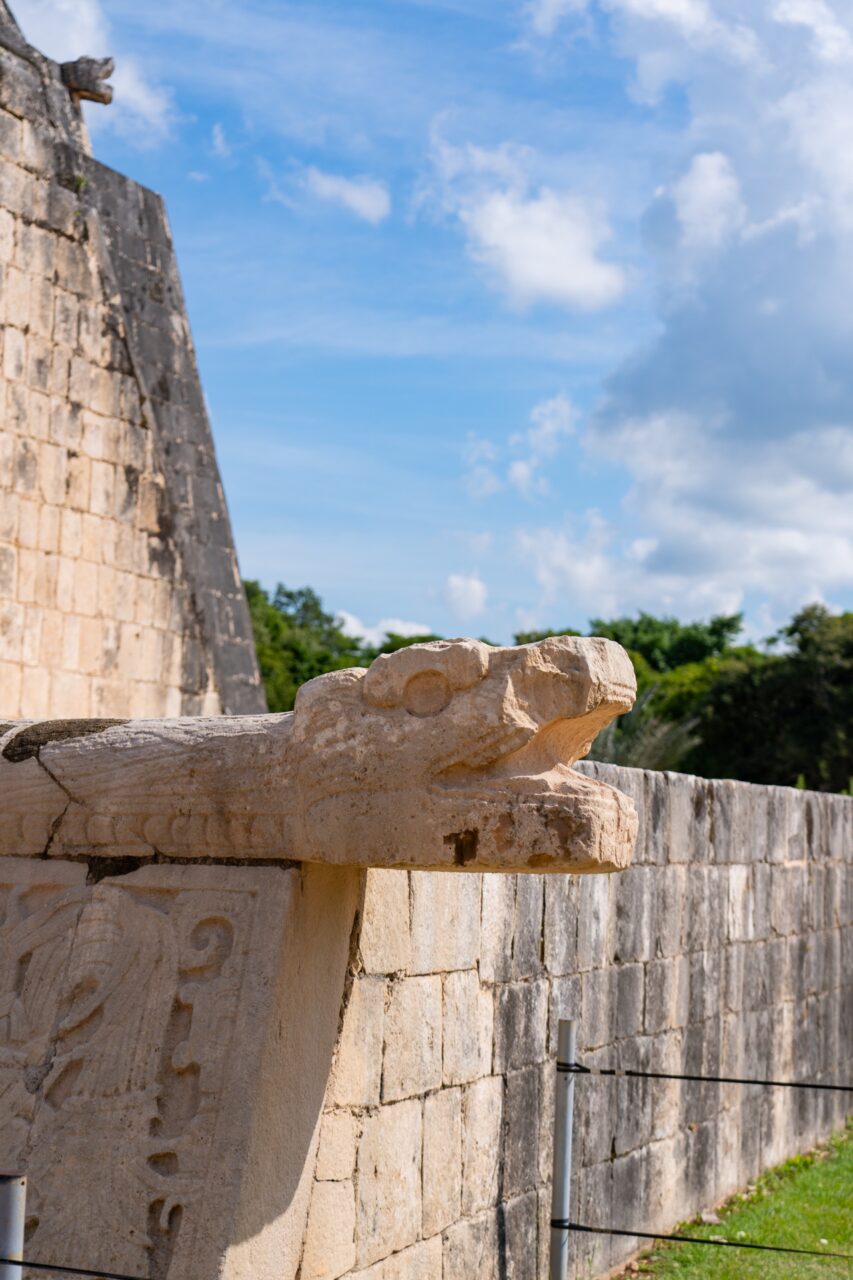
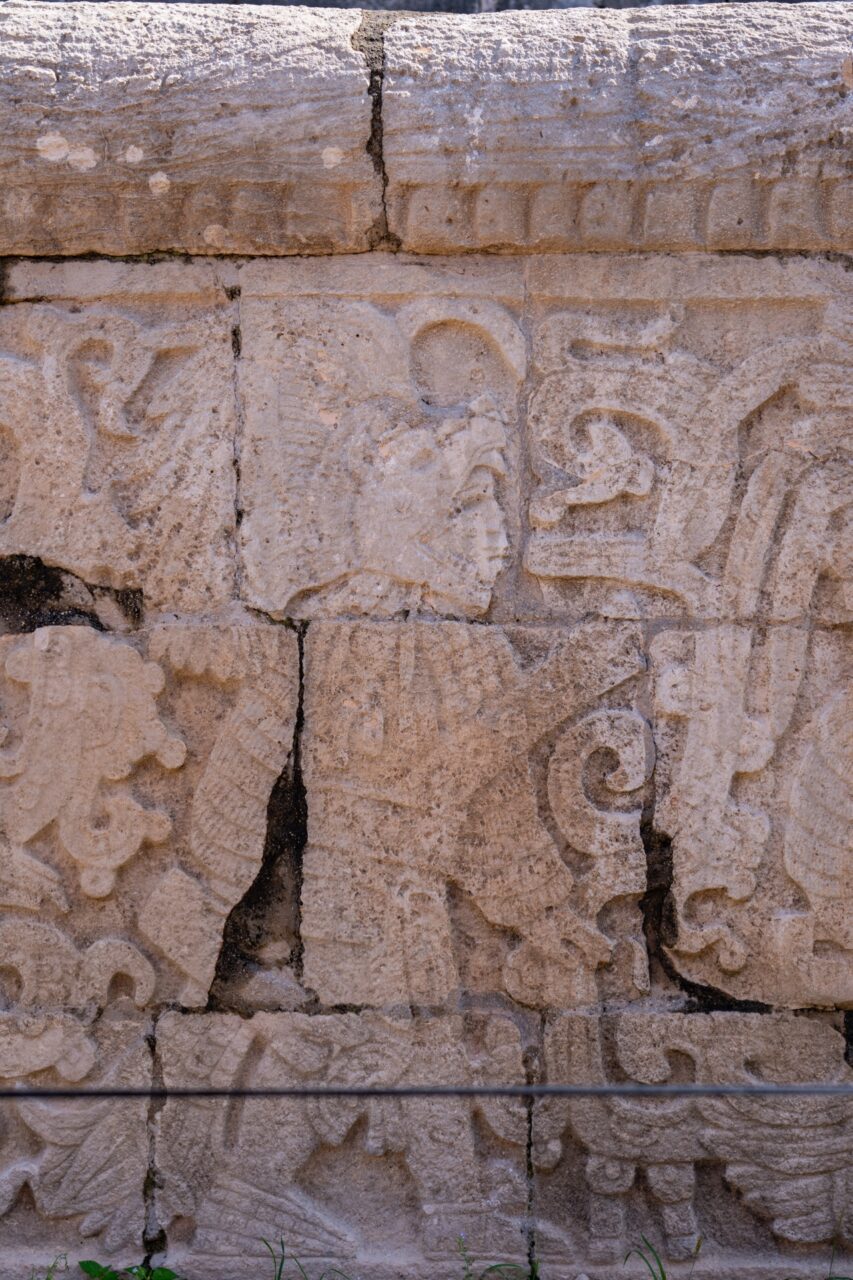
The acoustics of the court were also remarkable, by speaking or clapping on one end of the ball court, the sound will travel across the playing alley and be audible at the other end, approximately 150 meters (490 feet) away. It is believed this feature may have enhanced the game by allowing players to hear spectators, coaches, or their teammates more clearly.
Fun fact: the classic cartoon “The Road to El Dorado” was heavily based on the beauty and culture of Chichen Itza, and they featured the Ball Game in the film.
THE PLATFORM OF SKULLS
Next, our tour guide led us to the more grim and dark Platform of Skulls, aka The Tzompantli. A tzompantli was a type of rack that was used for the public display of human skulls, typically those of war captives or other sacrificial victims. Our tour guide explained that the Mayans started human sacrifices while withstanding a 40-year-long drought.
The Mayans believed their gods were mad at them so they needed to do something to win back their favour. It was thought that “one drop of blood = one drop of water”. While grim, it was interesting to learn about the history of human sacrifices.
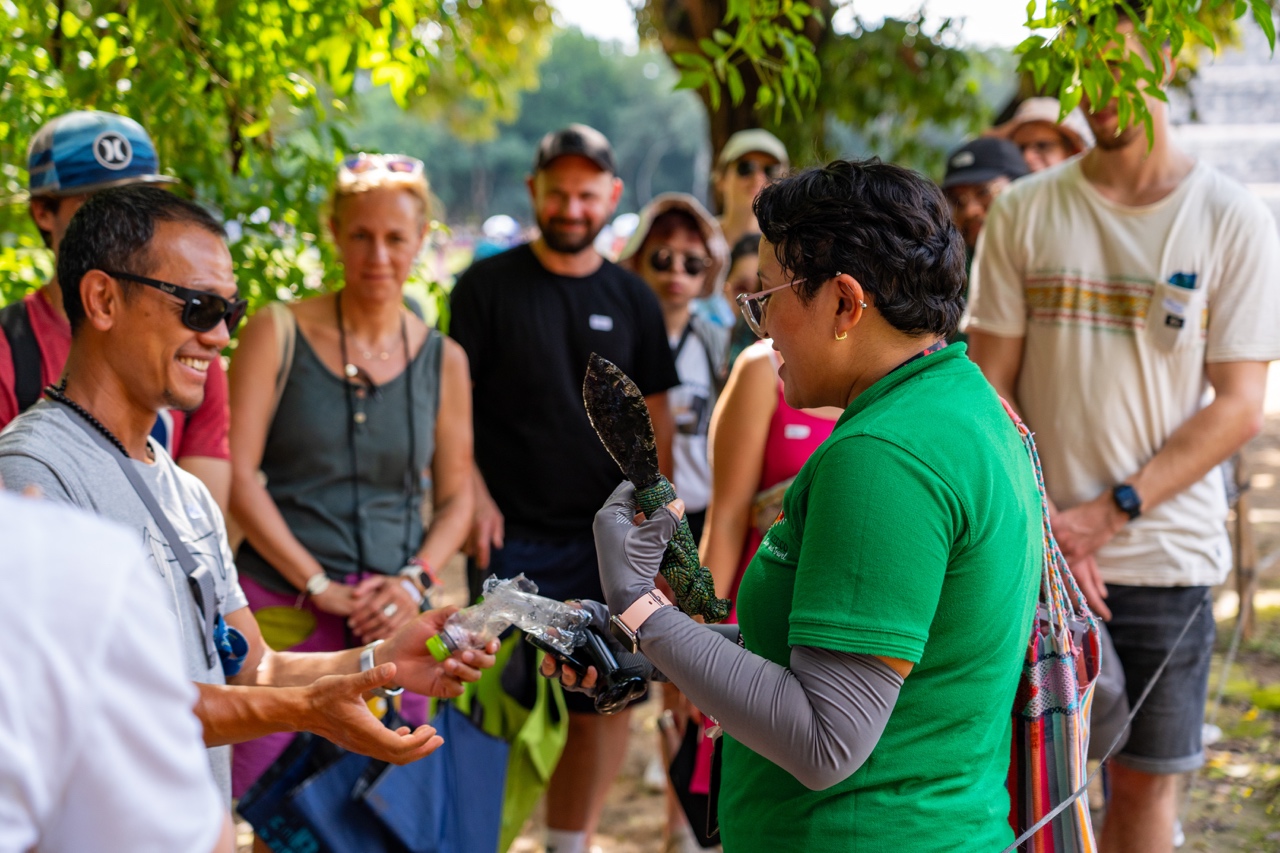
Our guide showed us some of the real obsidian knives they sell on the grounds. Not all of the obsidian items for sale were real, but she knew which stall sold true obsidian, and demonstrated how sharp it was by having one of the tour participants cut through a water bottle. We learned that obsidian blades can rival that of modern surgical steel knives. By using sharp obsidian tools to kill their sacrifices, they ensured a quick, clean death.
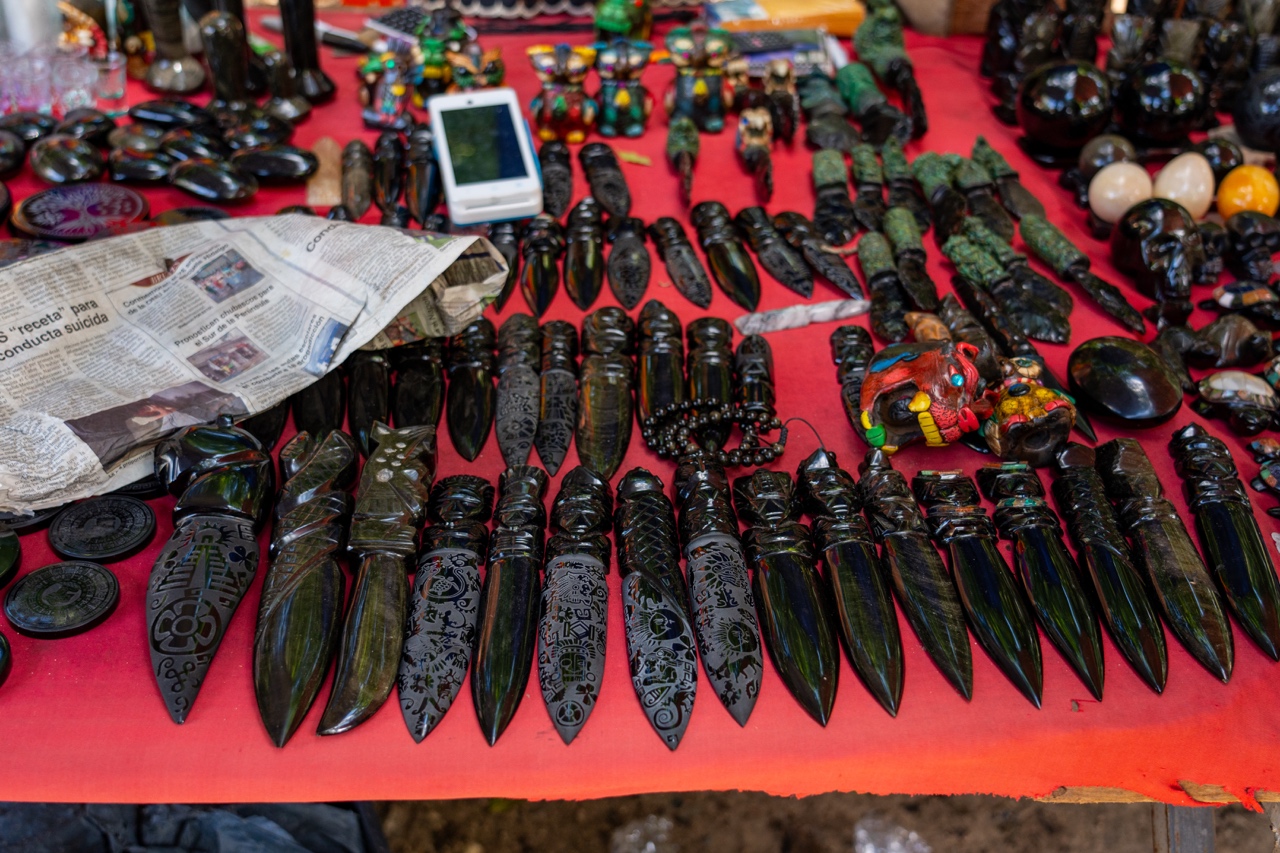
CHAC MOOL
Miriam introduced us to the Temple of Warriors, where the famous Chac Mool statue stood nearby. A Chac Mool is a type of Mayan sculpture that depicts a reclining human figure with its head facing to one side and a tray or basin on its stomach. These figures symbolized slain warriors carrying offerings to the gods; the bowl upon the chest was used to hold sacrificial offerings.
The Chac Mool at Chichen Itza is a famous and notable one, for its large size and the elaborate carvings on the surface.
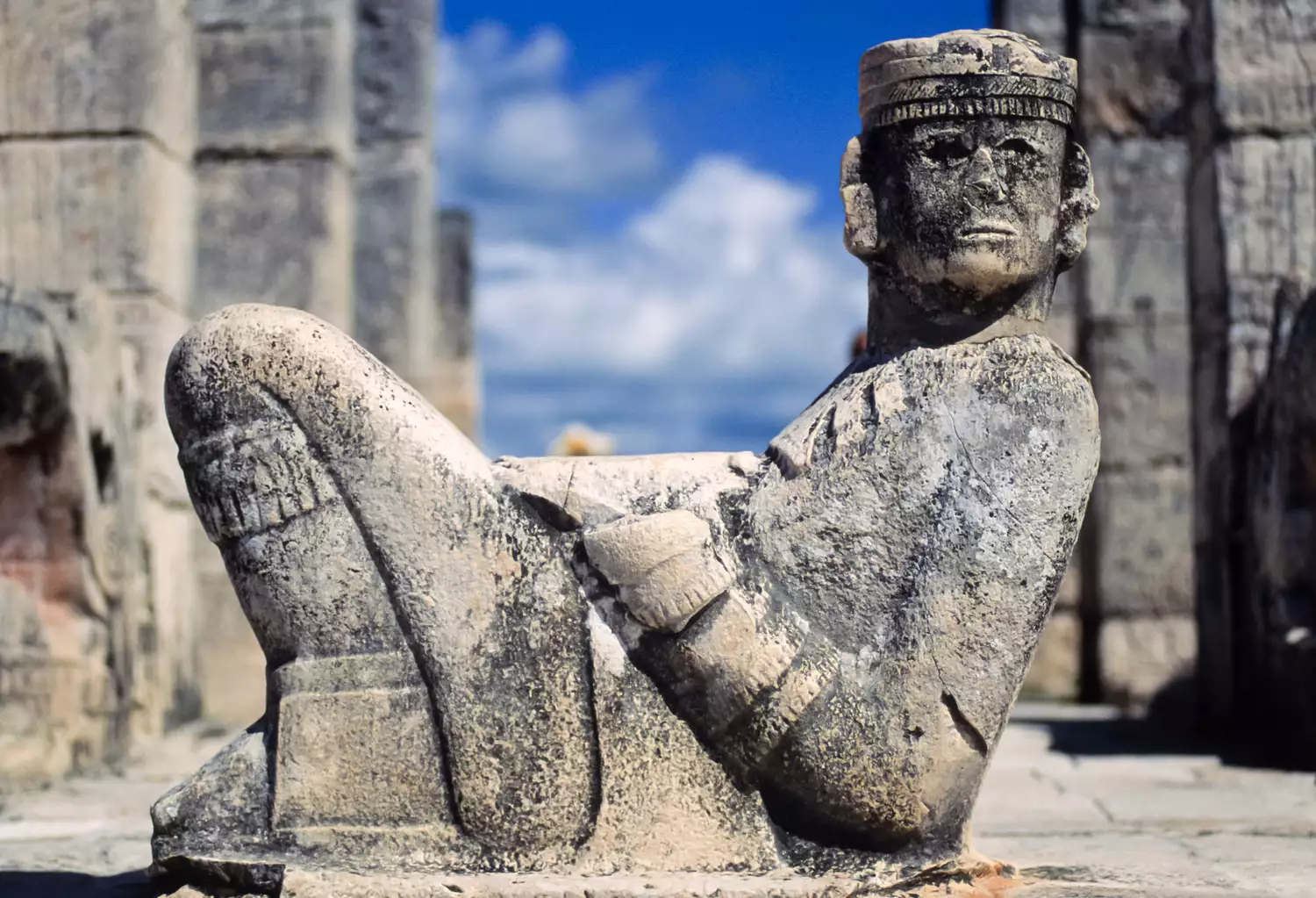
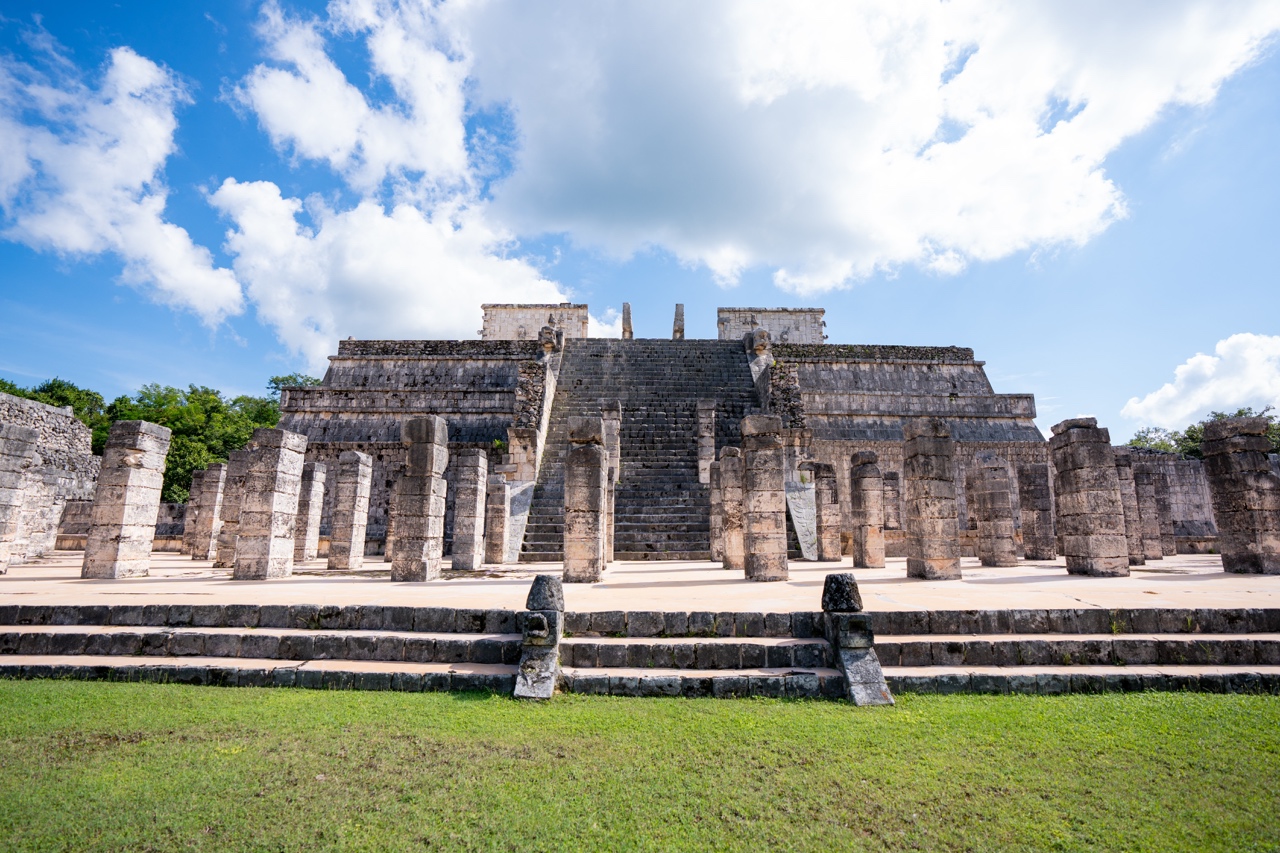
FREE TIME
After about 1 hour of the guided tour, we were given 45 minutes to explore the grounds on our own. Although it’s forbidden to climb El Castillo and the pyramid is fenced off, we were still able to get pretty close to the structure and admire its absolutely beautiful architecture. We wandered through the Temple of Warriors, checked out some of the obsidian that vendors had for sale, and enjoyed our time in the sun. The grounds aren’t huge, and we had plenty of time to see all of the structures in our free time.
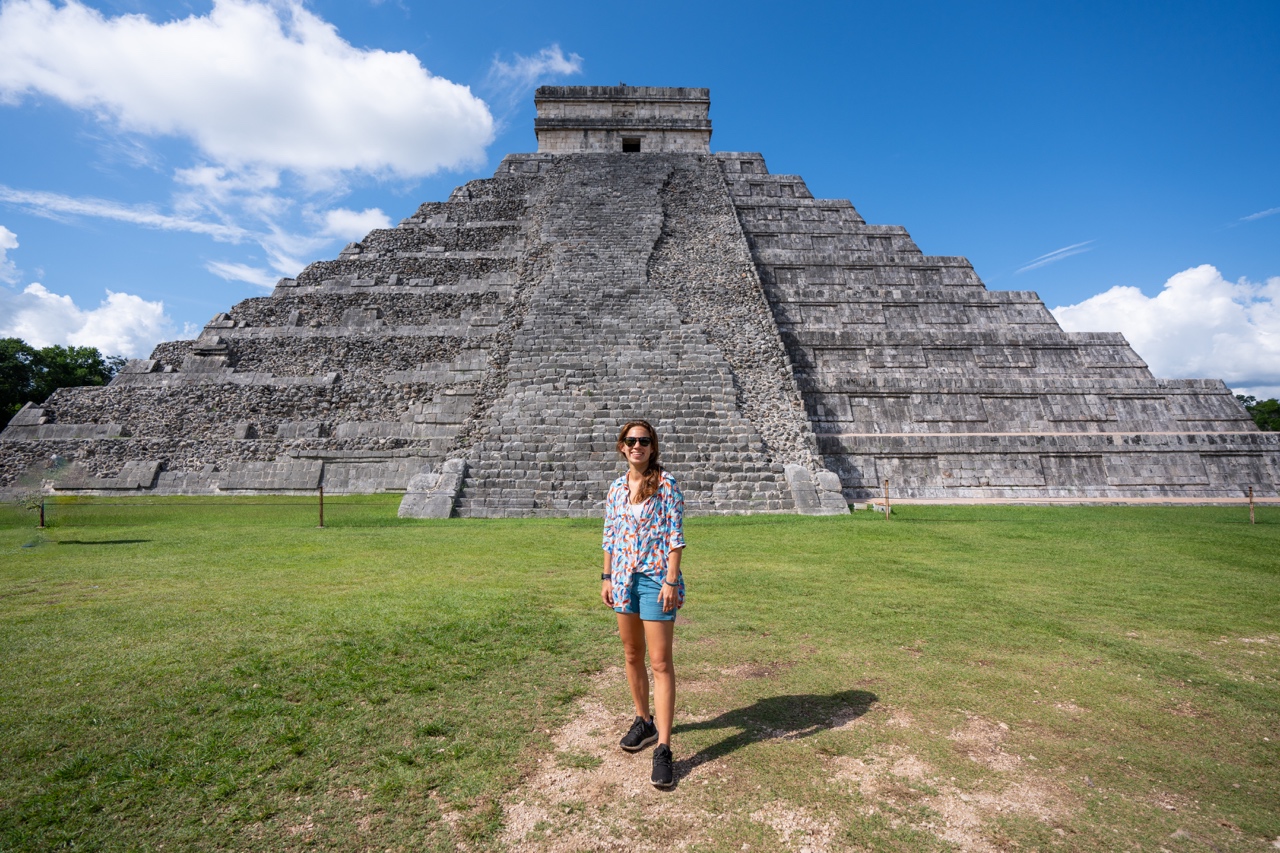
ARRIVAL AT CENOTE CHICHIKAN
After our time in the hot sun at Chichen Itza, we headed for our next stop: Cenote Chichikan. It was about a 30-minute drive on the bus, and we arrived at the grounds of the cenote. We were given wristbands for entry and had the choice of whether to visit the cenote or eat lunch first.
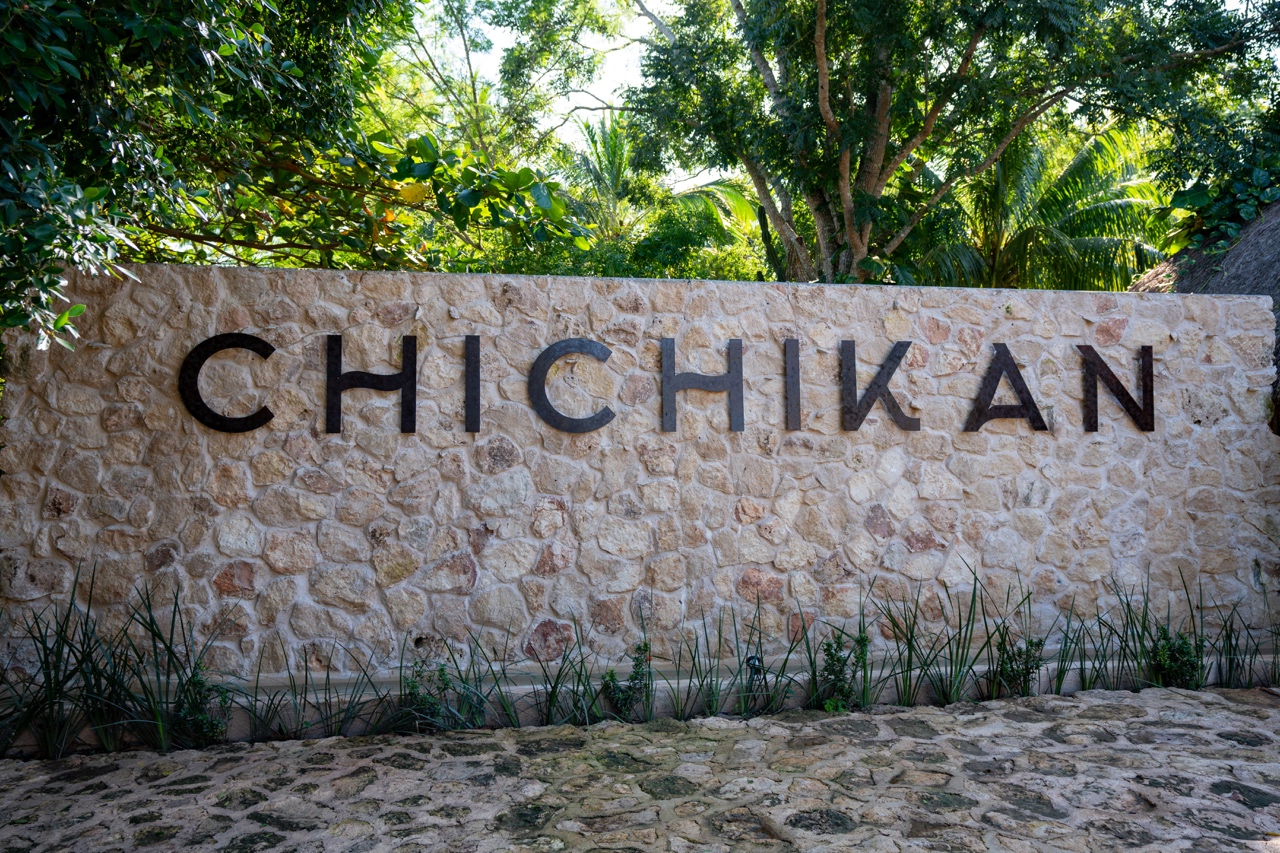
LUNCH
The lunch was a buffet with a huge spread of options, including a taco bar, mashed potatoes, salad bar, veggies, and other chicken and beef entrees. The food was good, and there were a lot of options. The buffet was included in the tour price, but drinks were extra.
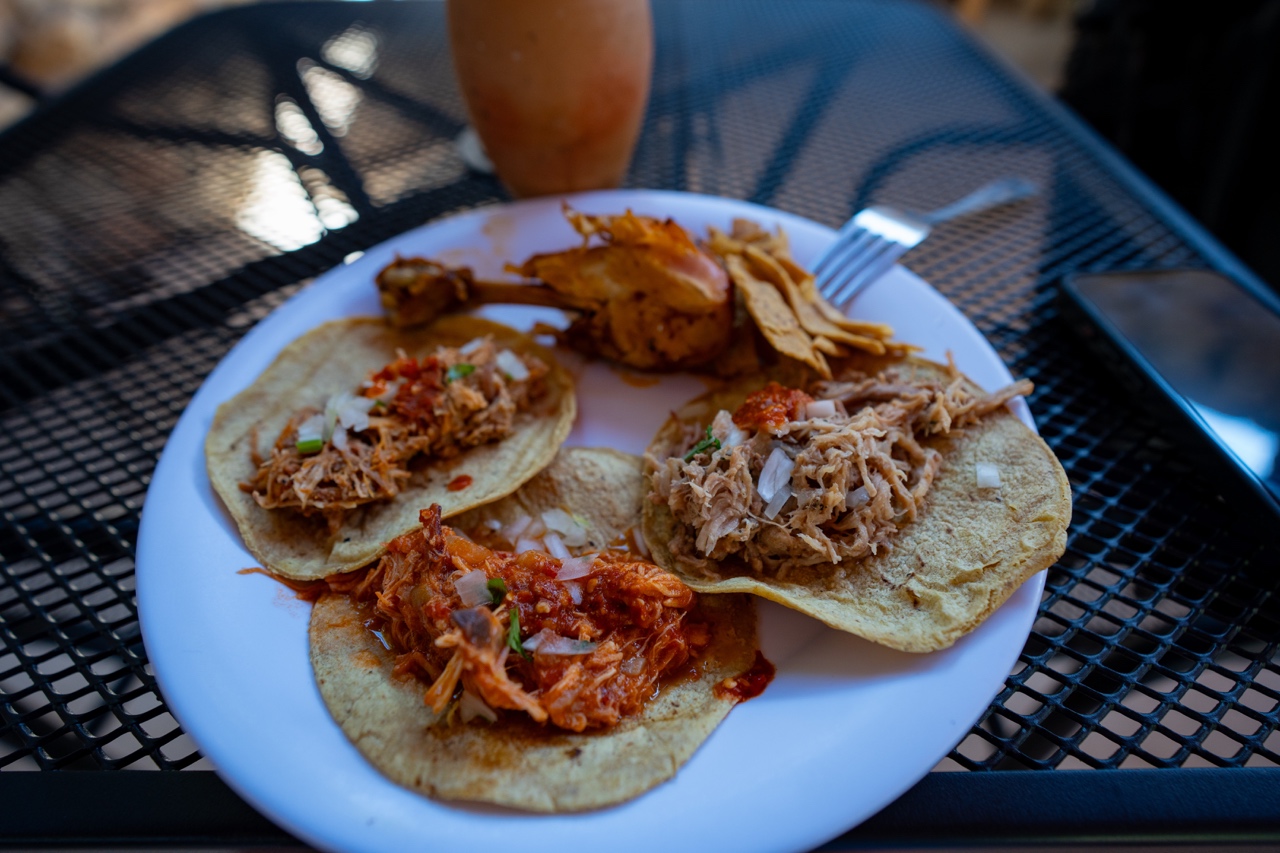
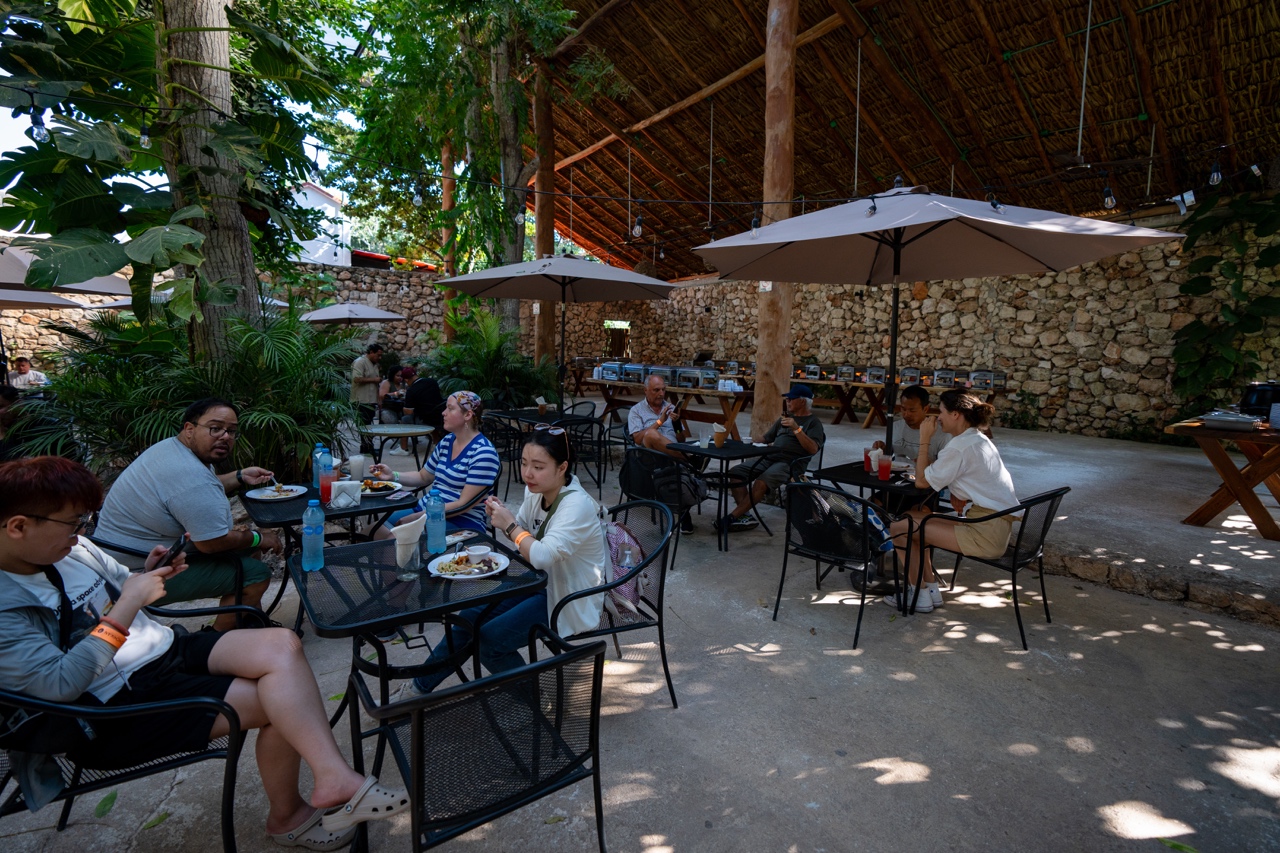
CENOTE
The cenote requires guests to rent a life jacket for 50 MXN ($3 USD) per person.
Locker rentals are also 50 MXN ($3 USD).
After getting changed, we headed down the stairs into the cenote. It was stunning. The giant hole was surrounded by trees, filled with little catfish, and had a dripping waterfall. We were seriously in awe of the natural beauty.
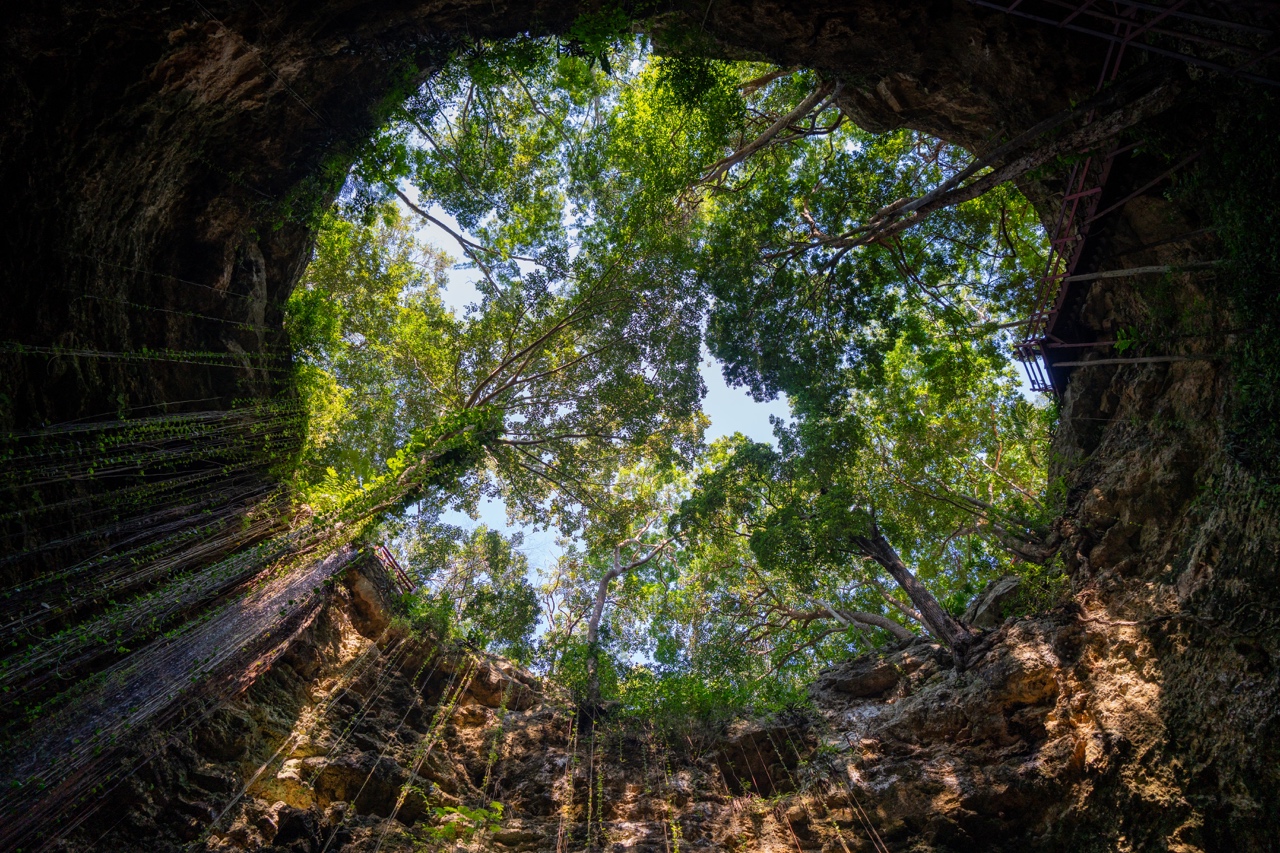
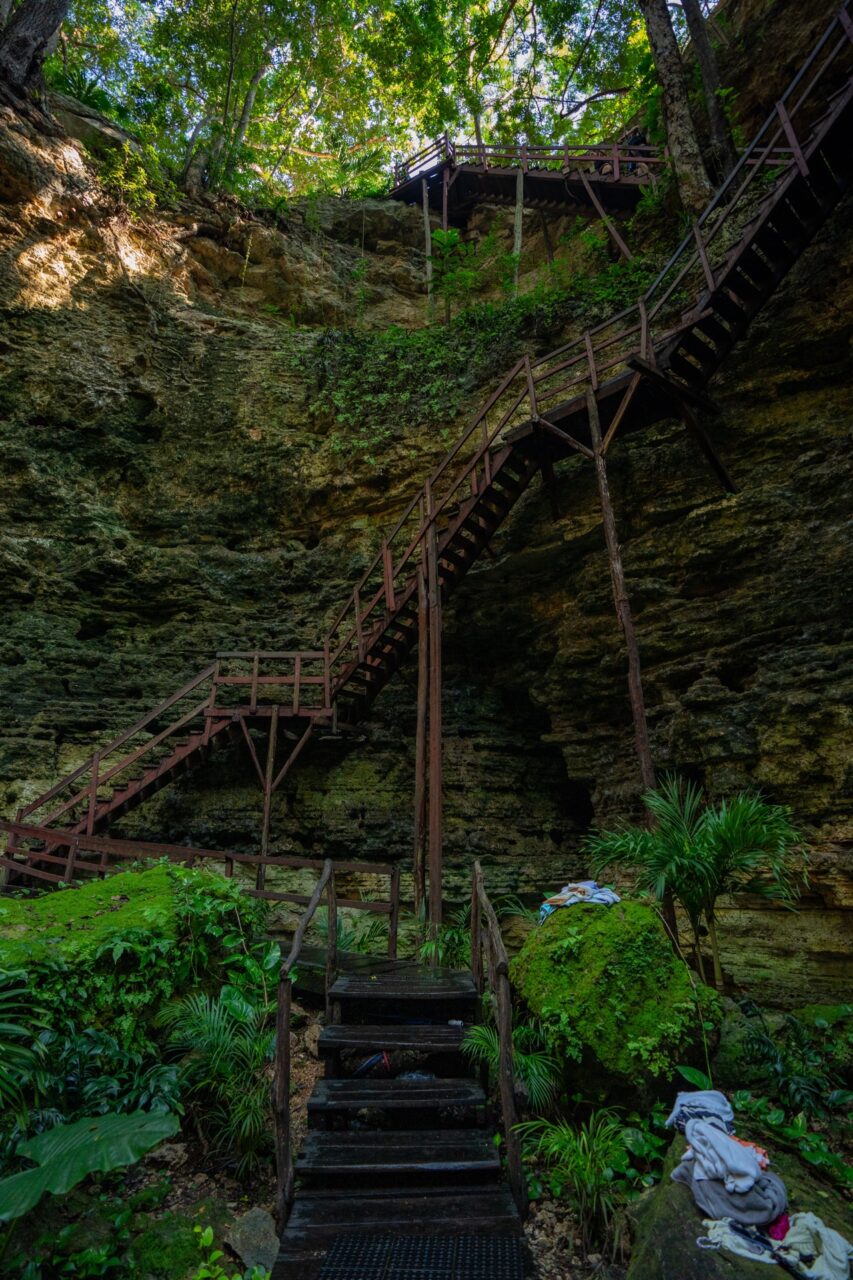
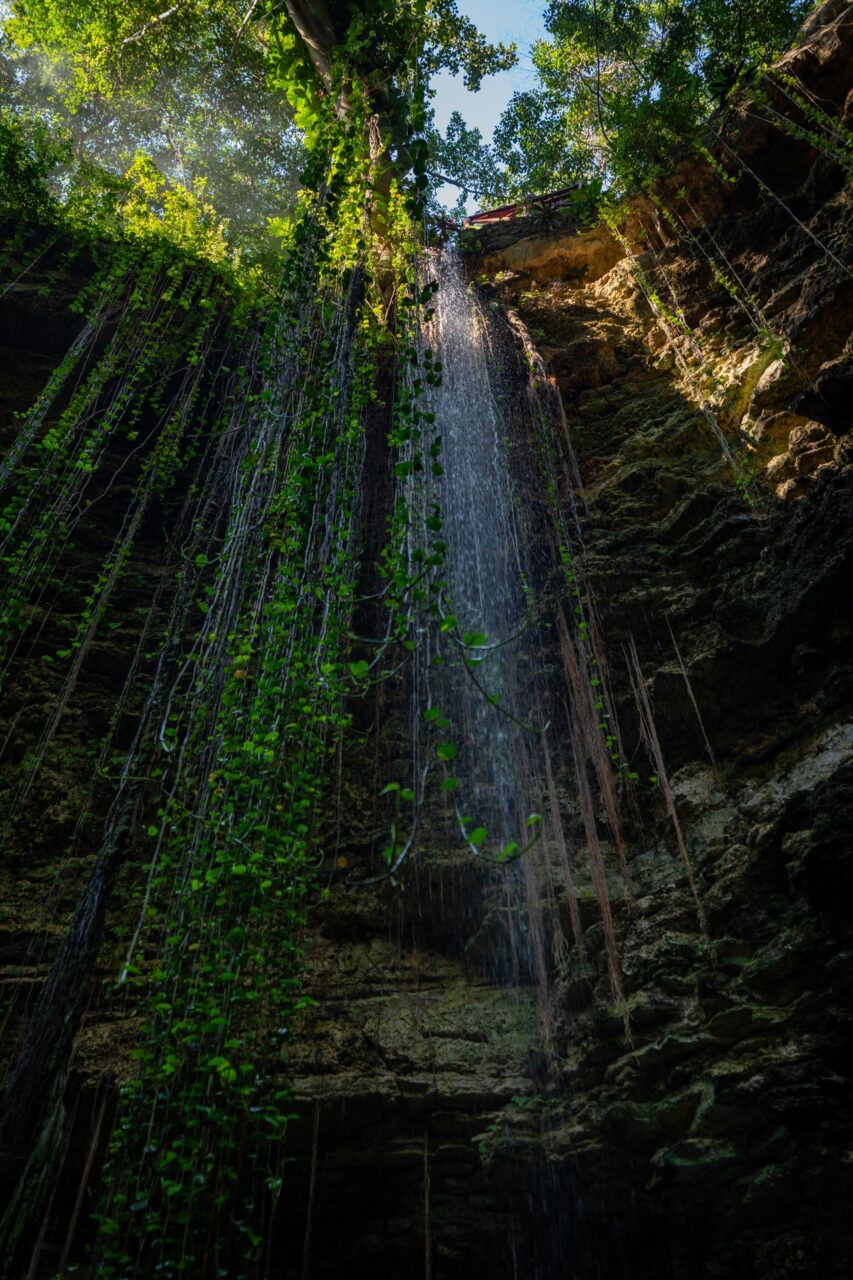
The water was pretty chilly, as it comes from underground springs, and it doesn’t get much sunlight down there. Cute little catfish were swimming all around, and there was a diving board to jump off of. We were able to spend about an hour in the cenote before having to get changed and ready to get back on the bus.
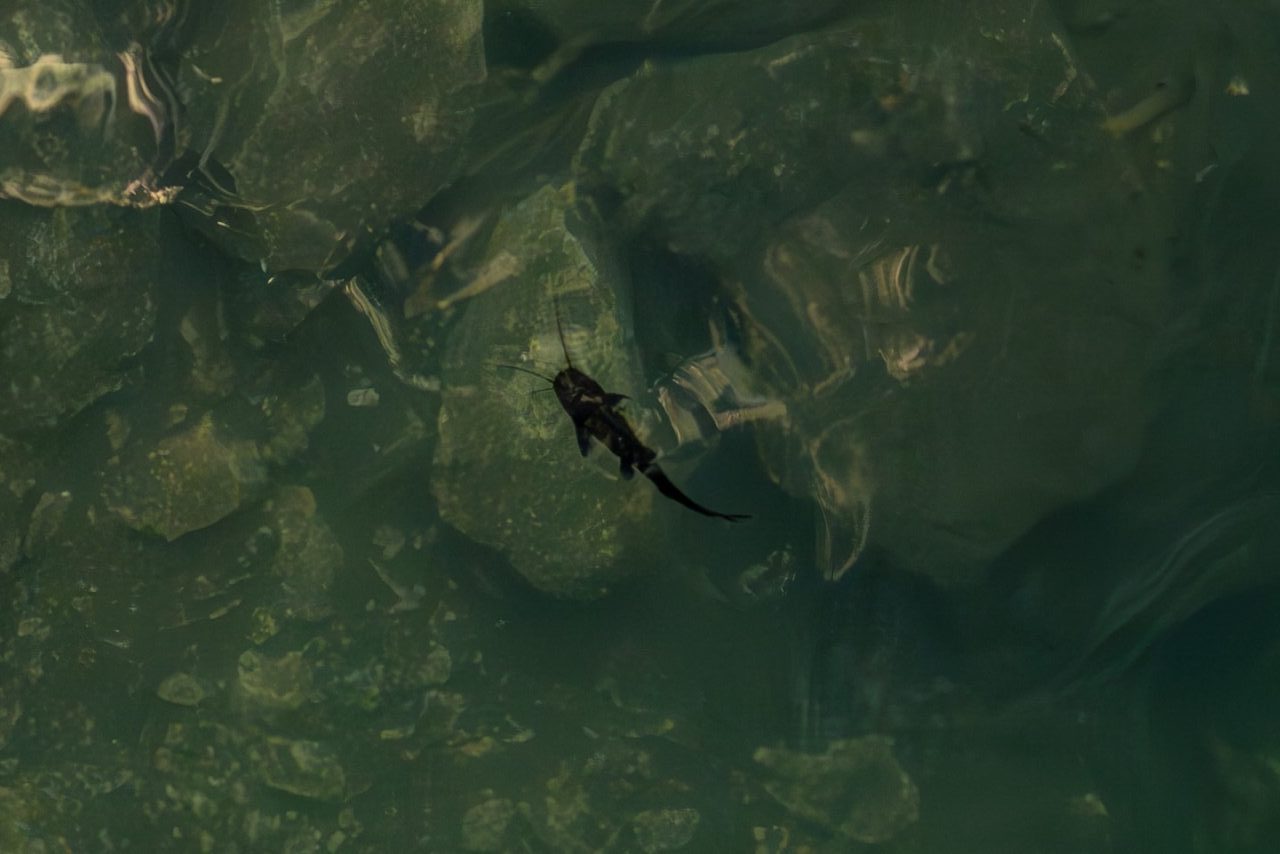
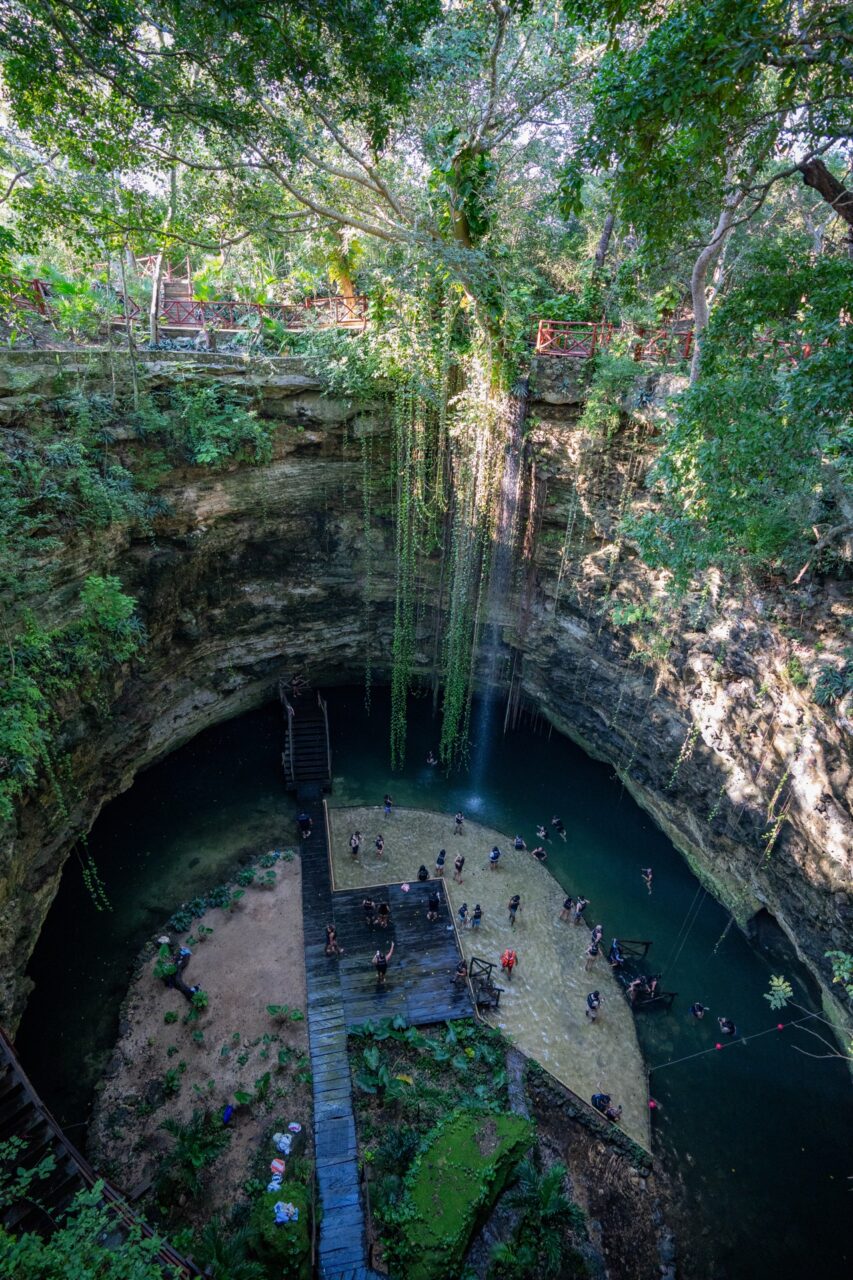
OTHER THINGS TO DO AT CHICHIKAN
If swimming isn’t your thing, there are a lot of areas to sit and relax after you finish your lunch. They had dance and drum performers there for your entertainment and plenty of comfortable seating around the lush grounds.

THE TOWN OF VALLADOLID
Our last stop of the day was the colonial town of Valladolid. We only had about 30 minutes to walk around and explore the city, which was charming and colorful.
Many people on our tour opted to go into the shops and do tequila or chocolate tastings. We chose to walk around the town and take in the adorable vibes. There is a big park in the centre of town that is the perfect place to people-watch and relax.
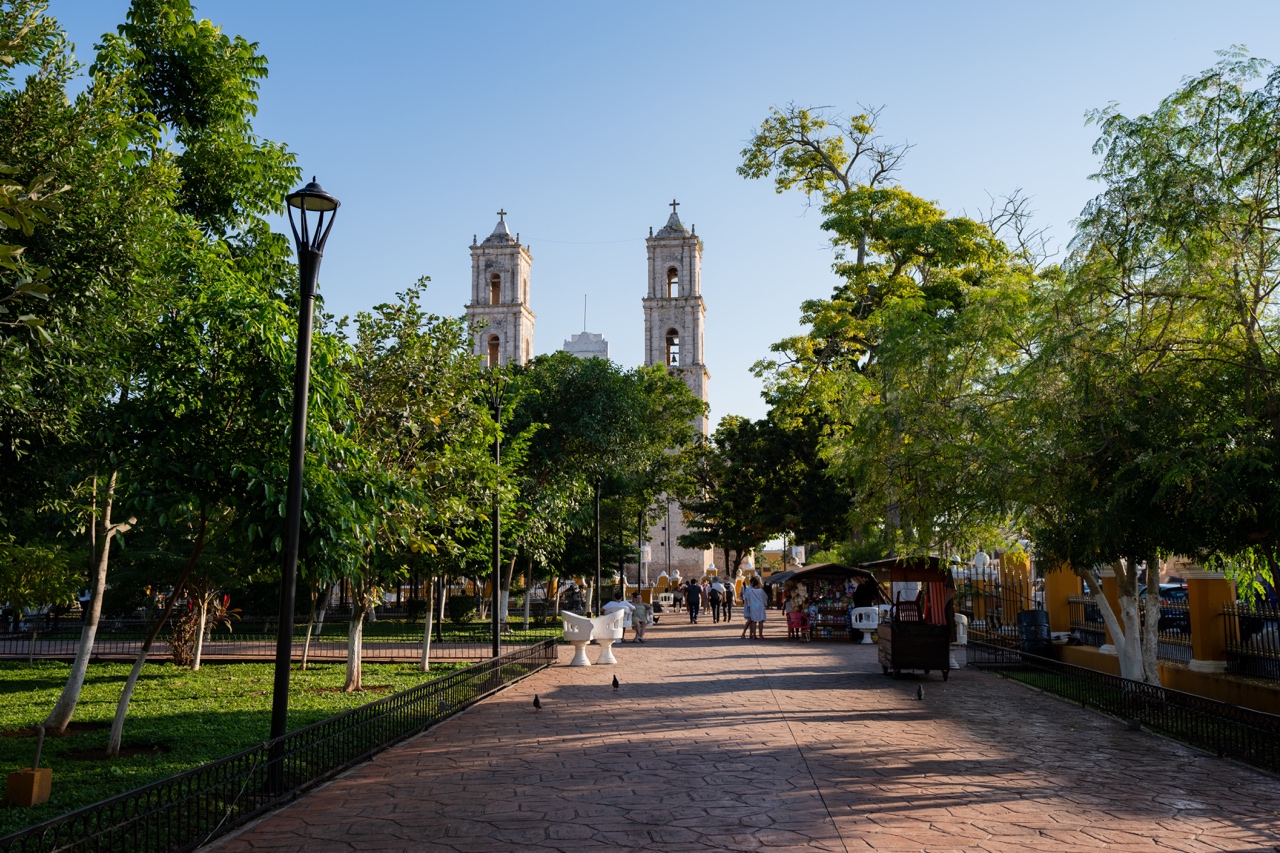
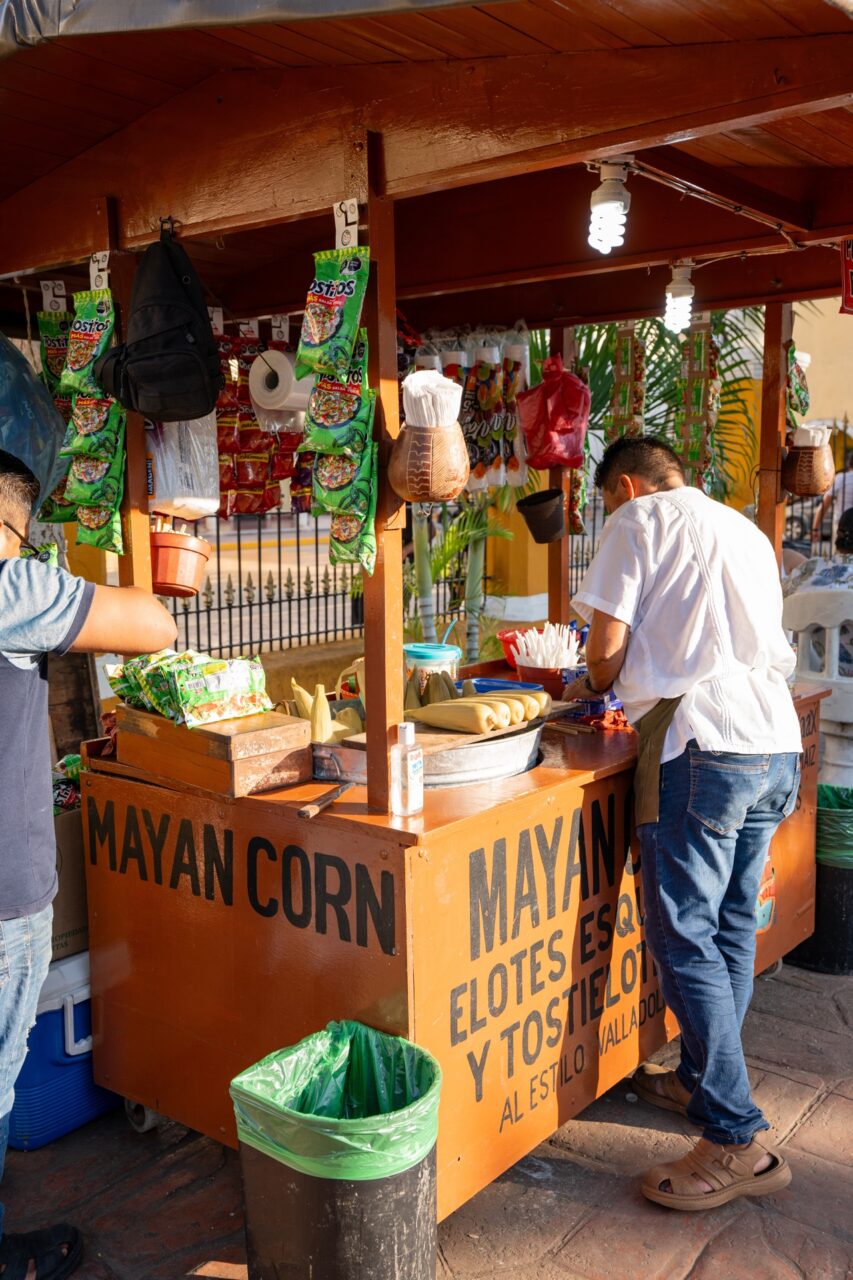
JOURNEY HOME
After a long day out in the sun, we hopped back on the bus to take us back to Tulum. It was about a 1.5-hour drive, and we were dropped back off at the Super Aki, and if you got a hotel dropoff there were sprinter vans to take you home.
We got home around 7 pm, making it a solid 12+ hour day. However, we learned a ton, got to see some amazing Mayan culture, and were blown away by the beauty of the cenote.
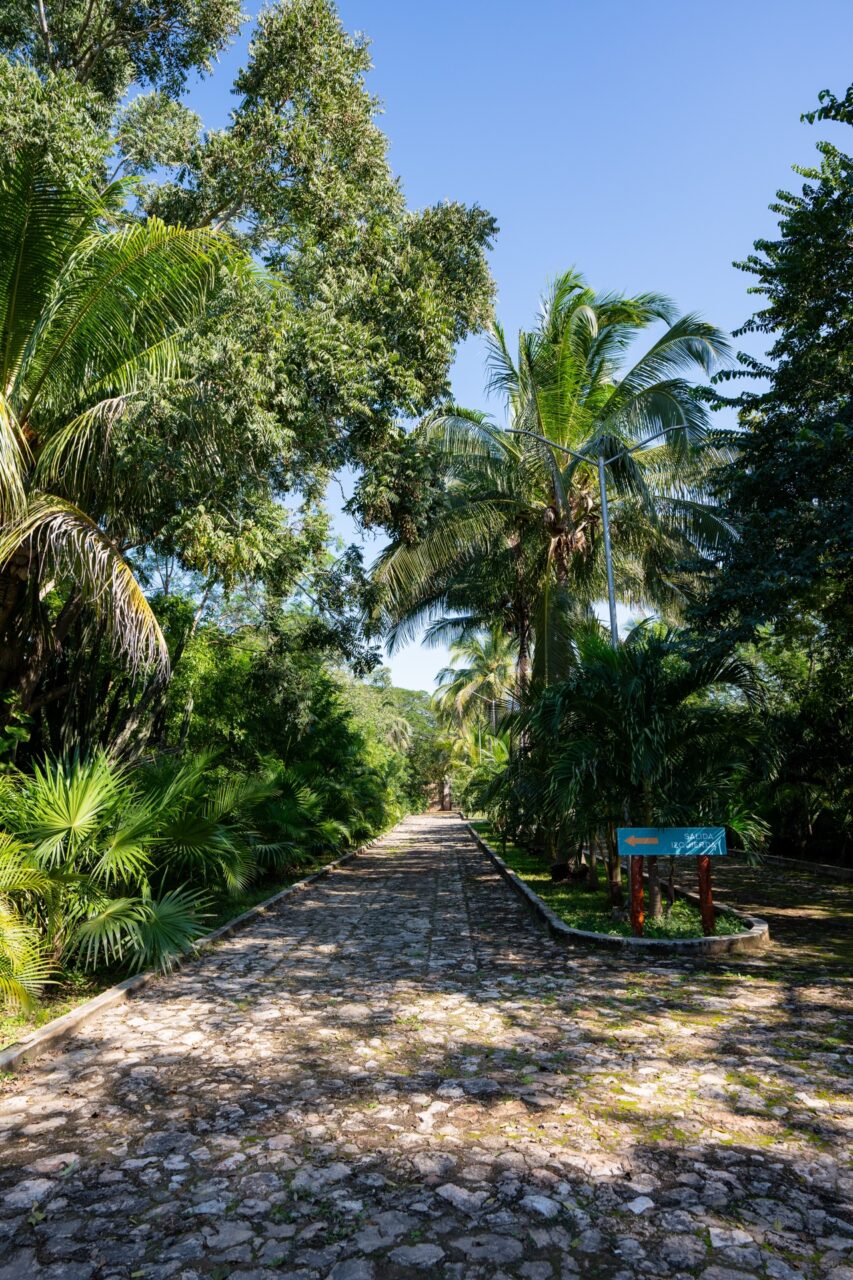
IS IT WORTH IT?
To be honest, we thought the 35 USD entry fee per person to Chichen Itza was a bit steep. The grounds themselves aren’t that big, so it was a lot to fork out on top of the tour price. Our tour guide told us that the Yucatan government recently added an extra tax on all visitors to Chichen Itza, making it now the most expensive historical site to visit in Mexico.
However, the tour price itself was super reasonable, and we were glad that we got to see all of the amazing history and culture in the area. The food was good, our guide was a wealth of knowledge, and the itinerary was well thought out.
Basically, if you are planning to see Chichen Itza anyway, then this tour is definitely the way to go! You will get so much value from the information and itinerary they provide.
WHAT TO BRING
- Sun protection & sunglasses: there is little to no shade in Chichen Itza so bring a hat, sunglasses, and any sun protection that you may need (many people rented umbrellas to stay in the shade, so maybe bring your own).
- Water: you are not allowed to bring any food or drinks into Chichen Itza except for water (or electrolyte drinks), so make sure to fill your bottles up as liquids can’t be purchased inside the historical site.
- Swimsuit & waterproof camera: Bring your swimsuit and underwater camera for the cenote portion of the tour!

Overall, we had an amazing time on our tour. We learned fascinating facts about the Mayan empire, got to swim in a gorgeous cenote, and explore the cute and charming colonial town of Valladolid. We hope this travel guide helps you prepare for your tour, and you enjoy your Chichen Itza day trip as much as we did!
